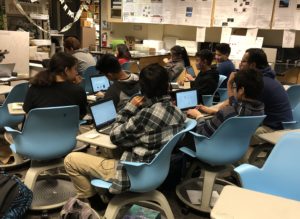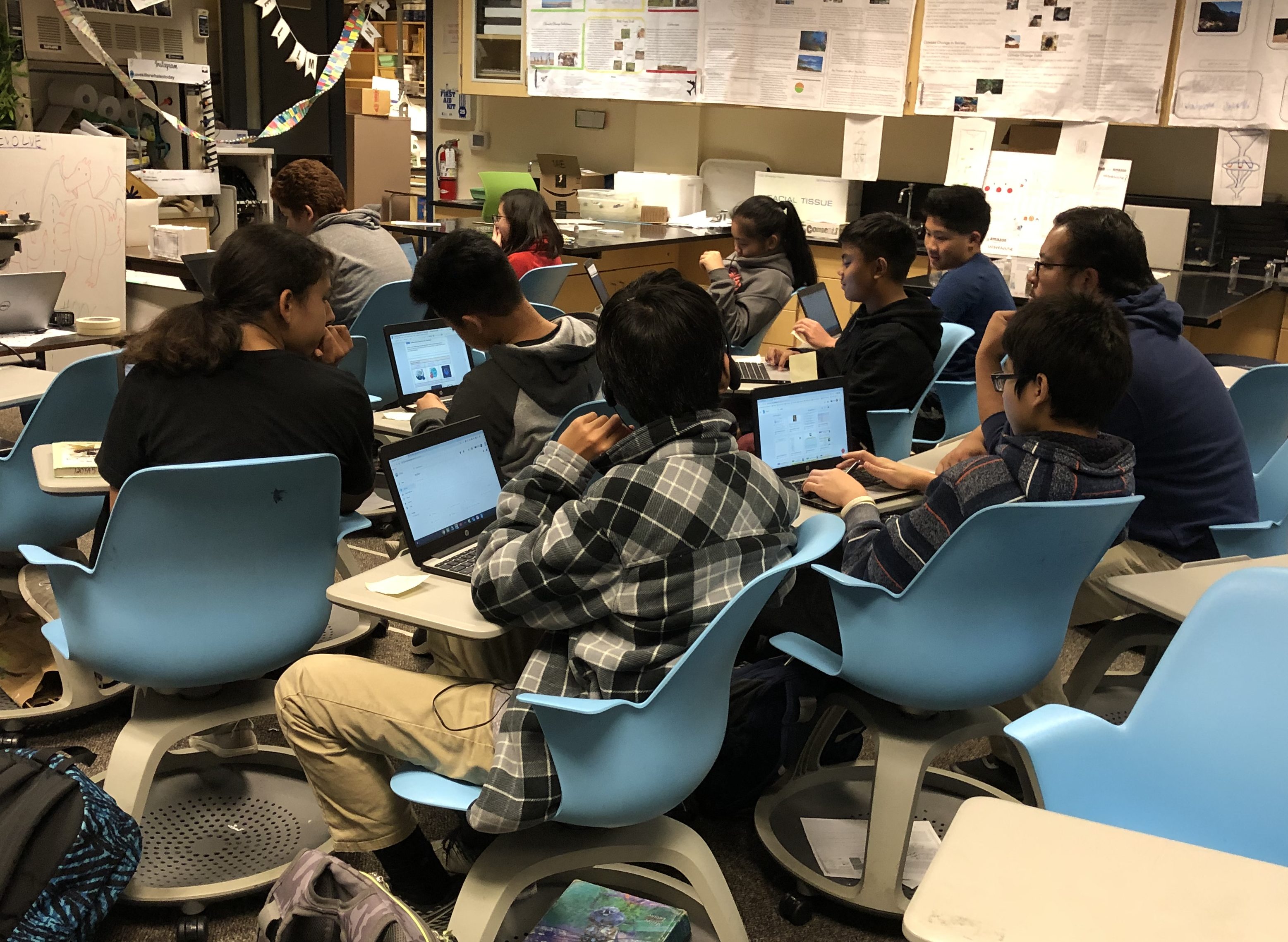
Students in Science Teacher Jerrell Maneja’s Summit Learning class collaborate on an assignment using Chromebooks. Work is done on the platform with teacher assistance.
By: Neval Mulaomerovic
Summit Learning will likely be expanded in the next few years to include more core academic subjects for sophomores and juniors, Principal Francis Rojas said. In its current pilot year, the learning platform has been successful in providing students with an alternative to traditional teaching methods, he said.
Summit Learning is a personalized learning system that combines online instruction with teacher assistance to allow students to work at their own pace. Math Teacher Nicholas Pham, Biology Teacher Jerell Maneja, and English Teacher Michael Triana attended a convention in Spokane, Washington to learn about the future potential of Summit Learning, Rojas said.
“We’ll look at ways to better utilize the master schedule to fit this in to allow more students to participate,” Rojas said. “The ninth graders that are in it right now will most likely continue to a tenth grade program. For tenth grade, it would probably now include Chemistry, Math II, and English II, and World History. When it comes to junior year, it’s probably going to go to physics and just follow the core academic subjects.”
Sixteen freshmen students are currently involved in the Summit Learning program, Rojas said. Their curriculum includes biology with Maneja, Math I with Pham, and English I with Triana, he said.
“It’s a small program,” Rojas said. “I’m assigned some mentees so every Friday I meet with some of the students and talk to them about how they’re doing with their goals and how they’re doing with their learning.”
The convention focused on how to engage students in lessons and allow them more ownership of their learning, Pham said. The program encourages students to work at their own pace online and ask for help in class when necessary, he added.
“They showed us how to get [students] to think outside the box and tackle problems using methods that aren’t traditional methods where you’re lecturing,” Pham said. “Instead, you guide them, give them the basic framework of how to solve a problem, but then you let them explore and get answers on their own and work in groups. You learn math in a way that’s more exploring and applying the basic skills that they have in solving word problems.
Students focus on the mechanics of math while on the program at home, while the teacher focuses on the theory and application of their lessons in the classroom setting, Pham said.
“A lot of it is exploring,” Pham said. “It is looking at this lesson, and thinking about how you would tackling this problem. They have all the resources on the website that they can click on to learn a specific skill. They can watch a Khan Academy video or look at a certain powerpoint that was created. Instead of me teaching it to them, they are actually learning on their own. I’m just the person that’s going to guide them through that process.”
Summit Learning does not just focus on online learning, Rojas said. Instead, it is intended to foster new connections between students and teachers by providing them with a variety of learning tools, he said.
“There was not one computer out during that period that we were in,” Rojas said. “The computer was out just to do a warm-up, then they closed it and talked about some closer presentation. It’s really the multi-model type of class, so there was still interaction between people, pencil, and paper.”
Summit Learning is beneficial because it allows students to work at their own pace and consult mentors for assistance with assignments, Summit Learning Student Gustavo Lucrecio said. Designated mentors meet with students weekly to assist them with projects, assignments, and setting goals in the program, he said.
“My mentor is [Director of Technology] Chin Song,” Lucrecio said. “Mentors help guide us with what to do on classwork and projects. It’s a good class. I like it because you learn at your own pace and the teachers and mentors are more helpful.”
However, there is no intention to make Summit Learning a school-wide requirement, Rojas said. The program is intended to serve as an option for students who prefer its teaching style, he said.
“We have ninth graders who are here now who have had summit since their elementary years,” Rojas said. “When it comes down to it, if there are students who find that that learning style is best for their success in high school to reach their college career goals, then we need to provide a continuation of that learning. So there is no plan to make summit school-wide.”

